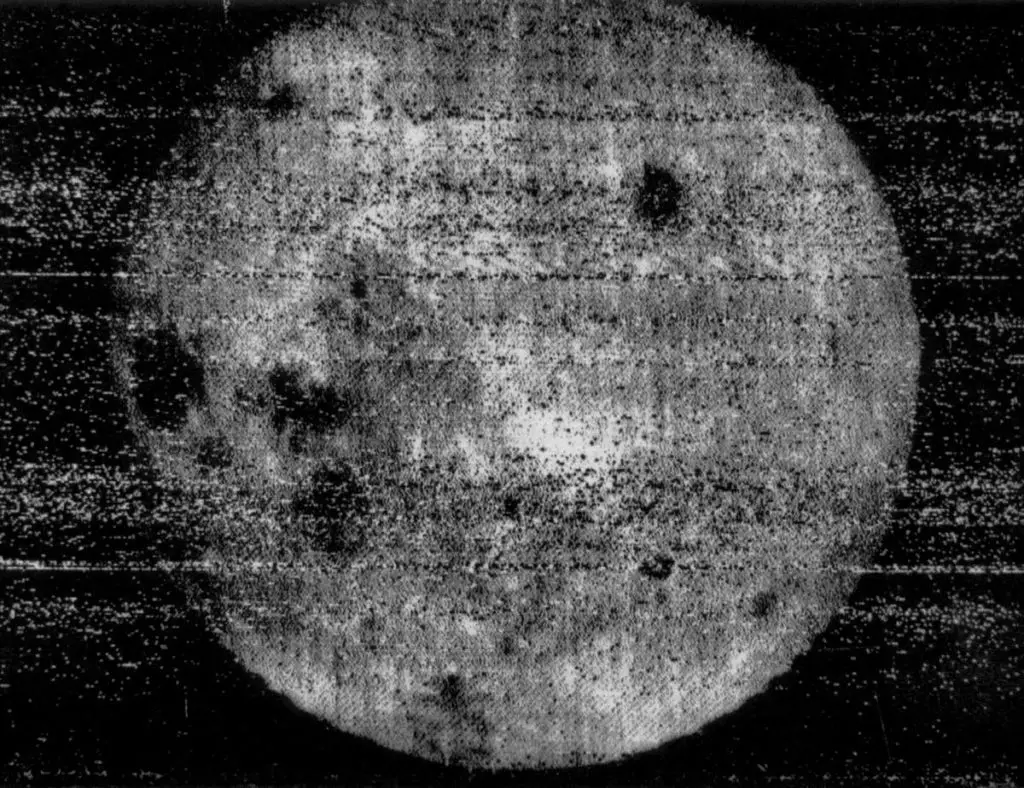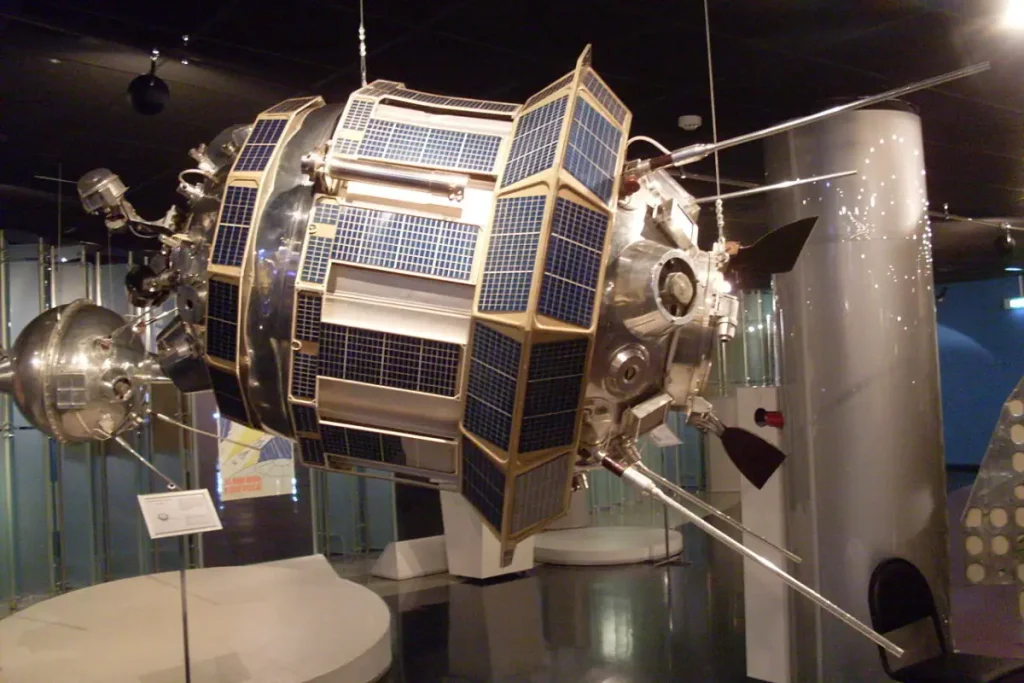On October 7, 1959, Soviet Union’s Luna 3 spacecraft photographed the far side of the moon for the first time ever. These photographs, despite being of poor quality, caused excitement when they were published because the humanity had never saw the far side of the moon before.
Today’s (October 7) story of what happened this day in Science, Technology, Astronomy, and Space Exploration history.
Luna 3
Luna 3 was launched on October 4, 1959. It entered lunar orbit on October 6.
On October 7, the photocell on the upper end of the spacecraft detected the sunlit far side of the Moon and the historic photography sequence started.
The first image was taken at 03:30 UT at a distance of 63,500 kilometers (39,457 miles) from the lunar surface and the last 40 minutes later from 66,700 kilometers (41,445 miles).
Luna 3 took a total of 29 photographs of the far side of the moon, covering 70% of the surface of the far side that we don’t see from Earth.
But, unfortunately, not all these photographs were successfully transferred to Earth.
Engineers started to attempt to transmit the photographs to Earth on October 8. But, due to the low signal strength, these attempts were unsuccessful.
Finally, as Luna 3 got closer to Earth, a total of 17 resolvable but noisy photographs were transmitted by October 18. So Luna 3 provided humanity with its first grainy views of the far side of the Moon.
Contact with the Luna 3 probe was lost on October 22. It was believed to have burned up in the Earth’s atmosphere in March or April of 1960 but may have survived in Earth’s orbit until after 1962.
The first photograph of the far side of the Moon

Photographs taken by Luna 3 showed the far side of the Moon was very different from the near side (the side that faces the Earth). Most noticeably there were only two lunar maria (large, dark, basaltic plains or the “seas”). They were later named Mare Moscovrae (Sea of Moscow) and Mare Desiderii (Sea of Dreams).
Now we know that these “seas” formed by ancient asteroid impacts on the far side of the Moon that triggered volcanic activity on the opposite (near) side.
The photos taken by Luna 3 prompted scientists to revise their theories of lunar evolution.
The first gravity assist
Luna 3 also performed the first gravity assist maneuver in the history of space exploration.
After its launch from the Baikonur Cosmodrome, the spacecraft passed behind the Moon from south to north and headed back to Earth. The Moon’s gravity changed the spacecraft’s orbit, and, because of the Moon’s own orbital motion, the spacecraft’s orbital plane was also changed.

Sources
- Luna 3 spacecraft on the NASA Space Science Data Coordinate Archive website
- Luna 3 mission on the NASA Solar System Exploration website
- Luna 3 on Wikipedia
- Moon Landings: All-Time List [1966-2025] - February 2, 2025
- What Is Max-Q and Why Is It Important During Rocket Launches? - January 16, 2025
- Top 10 Tallest Rockets Ever Launched [2025 Update] - January 16, 2025

